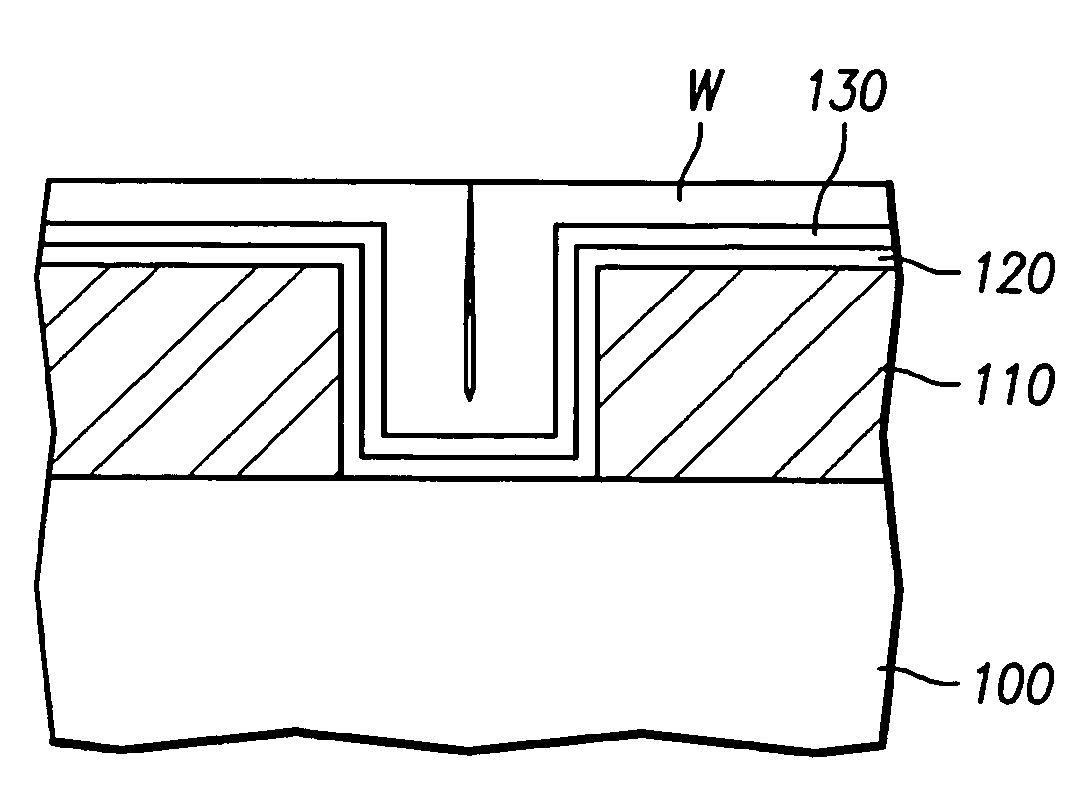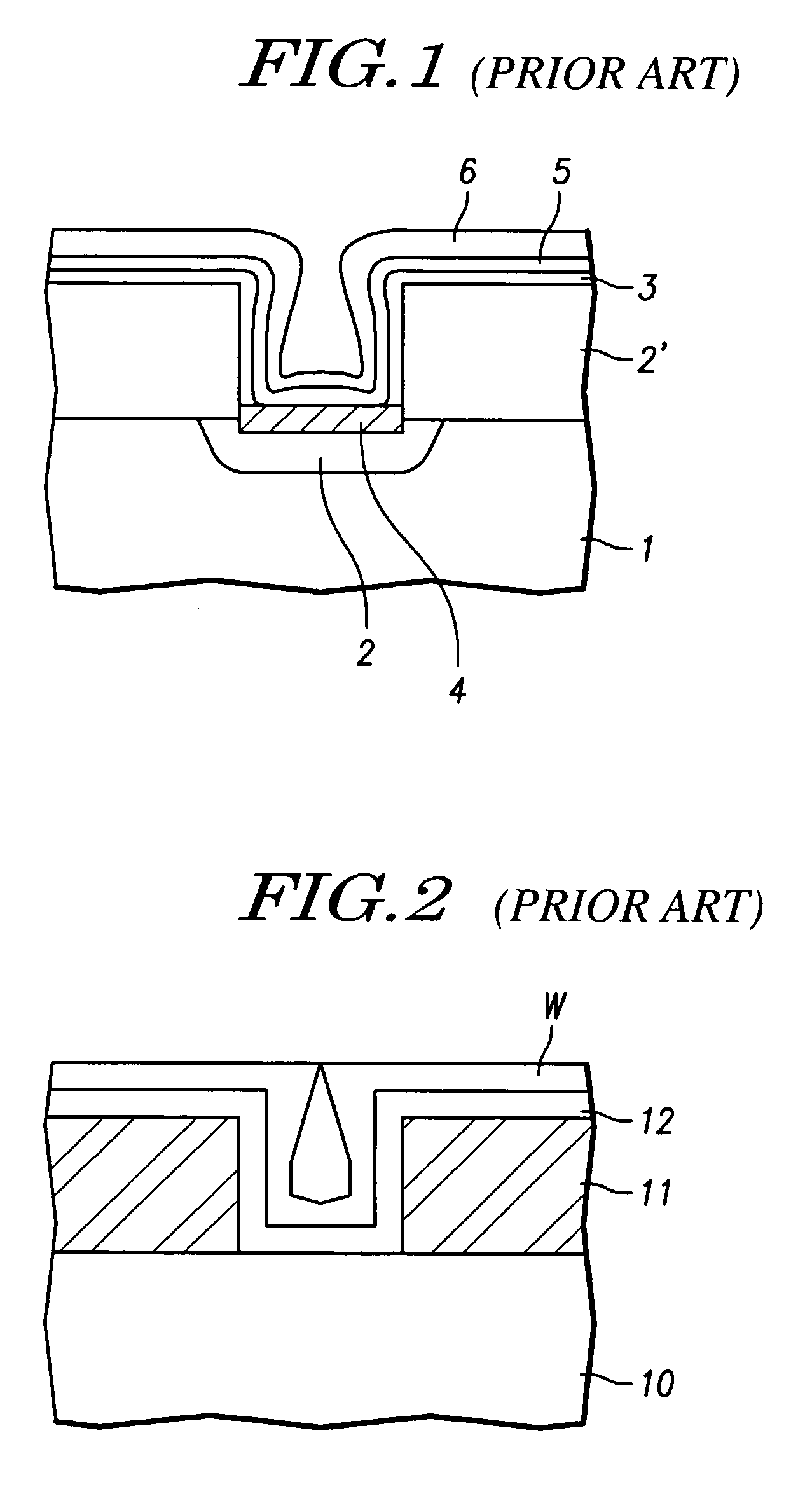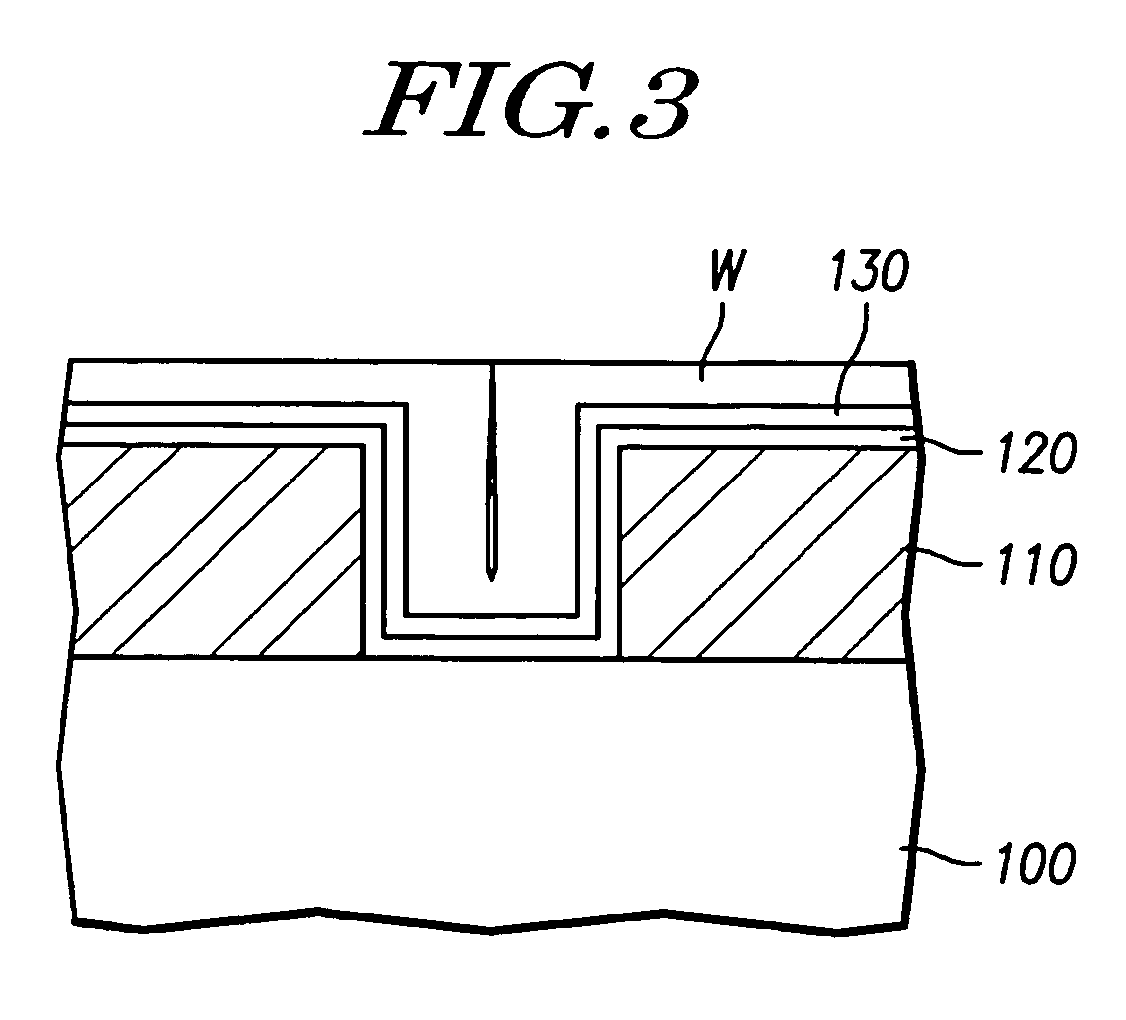Metallization method of semiconductor device
a semiconductor device and contact technology, applied in semiconductor/solid-state device manufacturing, basic electric elements, electric devices, etc., can solve the problems of pvd sputtering generally having inferior step coverage ability, junction spiking, current leakage, etc., to improve barrier characteristics, superior step coverage and gap-filling properties
- Summary
- Abstract
- Description
- Claims
- Application Information
AI Technical Summary
Benefits of technology
Problems solved by technology
Method used
Image
Examples
Embodiment Construction
[0020]Reference will now be made in detail to the present embodiments of the invention, examples of which are illustrated in the accompanying drawings. Wherever possible, the same reference numbers will be used throughout the drawings to refer to the same or like parts.
[0021]FIG. 3 illustrates an exemplary contact structure utilizing a bilayer TiN barrier structure with a tungsten contact layer. The bilayer TiN structure comprises two TiN layers having different densities deposited by PVD.
[0022]Referring to FIG. 3, a contact hole (or via hole, not numbered) is formed by etching a predetermined portion of an insulating layer 110 formed on a silicon substrate 100. The contact hole exposes a portion of an active region of substrate 100. TiN layers 120 and 130 are then formed over the entire surface of substrate 100 by PVD process using ionized metal plasma (IMP) and a mixed gas of nitrogen (N2) and argon (Ar).
[0023]Before the formation of TiN layers 120 and 130, a Ti layer can be first...
PUM
 Login to view more
Login to view more Abstract
Description
Claims
Application Information
 Login to view more
Login to view more - R&D Engineer
- R&D Manager
- IP Professional
- Industry Leading Data Capabilities
- Powerful AI technology
- Patent DNA Extraction
Browse by: Latest US Patents, China's latest patents, Technical Efficacy Thesaurus, Application Domain, Technology Topic.
© 2024 PatSnap. All rights reserved.Legal|Privacy policy|Modern Slavery Act Transparency Statement|Sitemap



